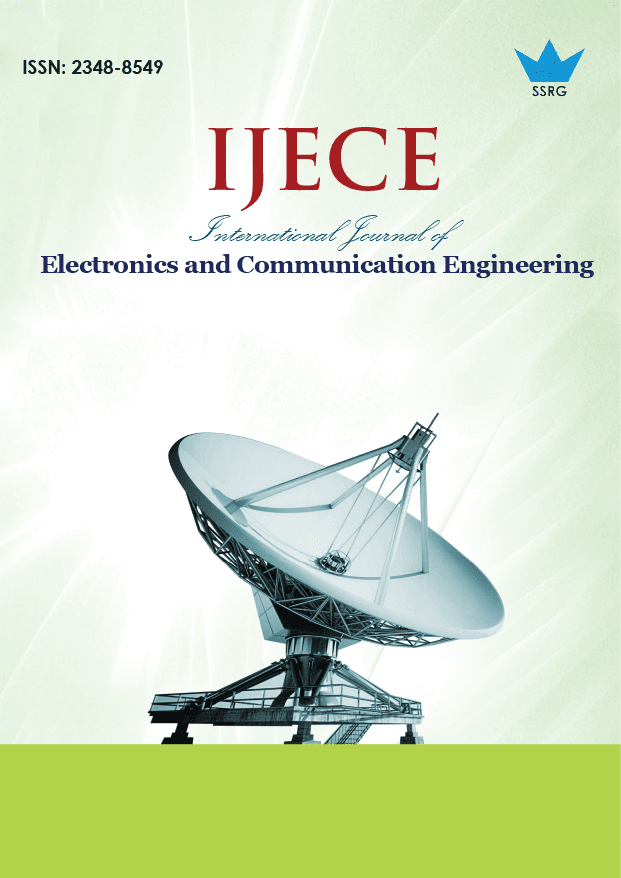QryptaShield: Quantum-Inspired Feature Selection and RL-Calibrated Federated Learning for Low-False-Positive IoT Intrusion Detection

| International Journal of Electronics and Communication Engineering |
| © 2025 by SSRG - IJECE Journal |
| Volume 12 Issue 10 |
| Year of Publication : 2025 |
| Authors : Srikanth Reddy Vutukuru, Srinivasa Chakravarthi Lade |
How to Cite?
Srikanth Reddy Vutukuru, Srinivasa Chakravarthi Lade, "QryptaShield: Quantum-Inspired Feature Selection and RL-Calibrated Federated Learning for Low-False-Positive IoT Intrusion Detection," SSRG International Journal of Electronics and Communication Engineering, vol. 12, no. 10, pp. 177-195, 2025. Crossref, https://doi.org/10.14445/23488549/IJECE-V12I10P115
Abstract:
The exponential growth of heterogeneous IoT edge data has intensified challenges in intrusion detection due to high dimensionality, class imbalance, and privacy constraints, while fixed thresholds and centralized training increase false positives and risk data leakage. To address these issues, this study proposes QryptaShield, an end-to-end intrusion detection framework unifying Quantum-Informed Adaptive Feature Selection (QIAFS), Neuro-Swarm Edge AI (NSEA), quantum-Augmented Reinforcement learning (QARL), and a Zero-Knowledge Secure Communication Layer (ZKSCL). QIAFS leverages entanglement-aware ranking and quantum kernels to reduce redundancy, NSEA enables lightweight on-device CNN inference with swarm-based adaptation, QARL dynamically adjusts thresholds and defense actions via quantum-enhanced RL, and ZKSCL ensures privacy-preserving, trust-weighted federated aggregation through lattice-based homomorphic encryption and blockchain-backed trust scoring. Evaluated against classical baselines including Logistic Regression, SVM, Naïve Bayes, kNN, AdaBoost, and RFF-based models, the proposed ensemble achieves Accuracy = 92.4%, F1 = 0.902, AUC = 0.976, and AP = 0.933, with FPR = 0.053 and Recall = 0.889, outperforming or matching the best classical baselines while significantly lowering false positives. Results confirm that QryptaShield delivers scalable, interpretable, and privacy-preserving IoT intrusion detection, offering a practical pathway toward next-generation anomaly detection and fraud analytics in resource-constrained, adversarial environments.
Keywords:
Quantum-Inspired Feature Selection, Reinforcement Learning for Thresholding, Federated Learning, Trustworthy AI, IoT Security, Comparative Performance Evaluation.
References:
[1] B. Olanrewaju-George, and B. Pranggono, “Federated Learning-Based Intrusion Detection System for the Internet of Things Using Unsupervised and Supervised Deep Learning Models,” Cyber Security and Applications, vol. 3, pp. 1-10, 2025.
[CrossRef] [Google Scholar] [Publisher Link]
[2] Ansam Khraisat et al., “Federated Learning for Intrusion Detection in IoT Environments: A Privacy-Preserving Strategy,” Discover Internet of Things, vol. 5, pp. 1-17, 2025.
[CrossRef] [Google Scholar] [Publisher Link]
[3] Naresh Kumar Bhagavatham et al., “Autonomic Resilience in Cybersecurity: Designing the Self-Healing Network Protocol for Next-Generation Software-Defined Networking,” International Journal of Computational and Experimental Science and Engineering, vol. 10, no. 4, pp. 1187-1203, 2024.
[CrossRef] [Google Scholar] [Publisher Link]
[4] Gerardo Iovane, “Quantum-Inspired Algorithms and Perspectives for Optimization,” Electronics, vol. 14, no. 14, pp. 1-27, 2025.
[CrossRef] [Google Scholar] [Publisher Link]
[5] Abderahmane Hamdouchi, and Ali Idri, “Optimizing Federated Learning for Intrusion Detection in IoT Networks,” Proceedings of the 16th International Joint Conference on Knowledge Discovery, Knowledge Engineering and Knowledge Management, vol. 1, pp. 448-456, 2024.
[CrossRef] [Google Scholar] [Publisher Link]
[6] Mohamed Abd Elaziz et al., “Federated Learning Framework for IoT Intrusion Detection using Tab Transformer and Nature-Inspired Hyperparameter Optimization,” Frontiers in Big Data, vol. 8, pp. 1-18, 2025.
[CrossRef] [Google Scholar] [Publisher Link]
[7] PratikWaghmode et al., “Intrusion Detection System Based on Machine Learning Using Least Square Support Vector Machine,” Scientific Reports, vol. 15, pp. 1-23, 2025.
[CrossRef] [Google Scholar] [Publisher Link]
[8] Luo Shan, “(IoT) Network Intrusion Detection System using Optimization Algorithms,” Scientific Reports, vol. 15, pp. 1-19, 2025.
[CrossRef] [Google Scholar] [Publisher Link]
[9] Shailendra Pratap Singh et al., “Multi-Objective Quantum Hybrid Evolutionary Algorithms for Enhancing Quality-of-Service in Internet of Things,” Scientific Reports, vol. 15, pp. 1-27, 2025.
[CrossRef] [Google Scholar] [Publisher Link]
[10] Euclides Carlos Pinto Neto et al., “Federated Reinforcement Learning in IoT: Applications, Opportunities and Open Challenges,” Applied Sciences, vol. 13, no. 11, pp. 1-27, 2023.
[CrossRef] [Google Scholar] [Publisher Link]
[11] Tasneem Qasem Al-Ghadi et al., “Leveraging Federated Learning for DoS Attack Detection in IoT Networks Based on Ensemble Feature Selection and Deep Learning Models,” Cyber Security and Applications, vol. 3, pp. 1-19, 2025.
[CrossRef] [Google Scholar] [Publisher Link]
[12] B. Swathi et al., “Enhancing Real-Time IoT Applications in Cloud Communication Networks Through Adaptive Intelligent Routing and Secure Data Transmission,” 2025 International Conference on Machine Learning and Autonomous Systems (ICMLAS), Prawet, Thailand, pp. 1432-1439, 2025.
[CrossRef] [Google Scholar] [Publisher Link]
[13] Fatma S. Alrayes, Syed Umar Amin, and Nada Hakami, “An Adaptive Framework for Intrusion Detection in IoT Security using MAML (Model-Agnostic Meta-Learning),” Sensors, vol. 25, no. 8, pp. 1-38, 2025.
[CrossRef] [Google Scholar] [Publisher Link]
[14] Haonan Tan et al., “Intrusion Detection Based on Adaptive Sample Distribution Dual-Experience Replay Reinforcement Learning,” Mathematics, vol. 12, no. 7, pp. 1-24, 2024.
[CrossRef] [Google Scholar] [Publisher Link]
[15] P. Venkata Krishna, K. Venkatesh Sharma, and A. MallaRedd, “A Machine Learning-based Approach for Detecting Network Intrusions in Large-scale Networks,” International Journal of Computer Engineering in Research Trends, vol. 10, no. 2, pp. 69-76, 2023.
[CrossRef] [Google Scholar] [Publisher Link]
[16] Yang Liu et al., “Quantum-Inspired Complex Spiking Neural Network for Multi-Source Data Joint Classification,” Information Fusion, vol. 126, 2026.
[CrossRef] [Google Scholar] [Publisher Link]
[17] Rajdeep Kumar Nath, Himanshu Thapliyal, and Travis S. Humble, “Quantum Annealing for Automated Feature Selection in Stress Detection,” 2021 IEEE Computer Society Annual Symposium on VLSI (ISVLSI), Tampa, FL, USA, pp. 453-457, 2021.
[CrossRef] [Google Scholar] [Publisher Link]
[18] Anjum Nazir et al., “A Novel Feature-Selection Algorithm in IoT Networks for Intrusion Detection,” Sensors, vol. 23, no. 19, pp. 1-19, 2023.
[CrossRef] [Google Scholar] [Publisher Link]
[19] Mousa Alalhareth, and Sung-Chul Hong, “An Improved Mutual Information Feature Selection Technique for Intrusion Detection Systems in the Internet of Medical Things,” Sensors, vol. 23, no. 10, pp. 1-21, 2023.
[CrossRef] [Google Scholar] [Publisher Link]
[20] Quadri Waseem et al., “A Survey and Analysis of Feature Selection Techniques in Machine Learning for IoT Device Classification within Smart Buildings,” Innovative Infrastructure Solutions, vol. 10, pp. 1-19, 2025.
[CrossRef] [Google Scholar] [Publisher Link]
[21] M. Sri Lakshmi et al., “Evaluating the Isolation Forest Method for Anomaly Detection in Software-Defined Networking Security,” Journal of Electrical Systems, vol. 19, no. 4, pp. 279-297, 2023.
[CrossRef] [Google Scholar] [Publisher Link]
[22] Jose García, Jorge Entrena, and Alvaro Alesanco, “Empirical Evaluation of Feature Selection Methods for Machine Learning Based Intrusion Detection in IoT Scenarios,” Internet Things, vol. 28, pp. 1-18, 2024.
[CrossRef] [Google Scholar] [Publisher Link]
[23] G. Logeswari et al., “An Improved Synergistic Dual-Layer Feature Selection Algorithm with Two Type Classifier for Efficient Intrusion Detection in IoT Environment,” Scientific Reports, vol. 15, pp. 1-21, 2025.
[CrossRef] [Google Scholar] [Publisher Link]
[24] Yasset Perez-Rivero et al., “Accurate and Fast Feature Selection Workflow for High-Dimensional Omics Data,” PLoS One, vol. 12, no. 12, pp. 1-14, 2017.
[CrossRef] [Google Scholar] [Publisher Link]
[25] Robert Bauer, and Alireza Gharabaghi, “Reinforcement Learning for Adaptive Threshold Control of Restorative Brain-Computer Interfaces: A Bayesian Simulation,” Frontiers in Neuroscience, vol. 9, pp. 1-10, 2015.
[CrossRef] [Google Scholar] [Publisher Link]
[26] Xue Yang, Enda Howley, and Michael Schukat, “ADT: Time Series Anomaly Detection for Cyber-Physical Systems via Deep Reinforcement Learning,” Computers and Security, vol. 141, pp. 1-12, 2024.
[CrossRef] [Google Scholar] [Publisher Link]
[27] Peijia Qin et al., “Threshold Moving for Online Class Imbalance Learning with Dynamic Evolutionary Cost Vector,” Transactions on Machine Learning Research, vol. 2024, pp. 1-28, 2024.
[Google Scholar] [Publisher Link]
[28] Joffrey L. Leevy et al., “Threshold Optimization and Random Undersampling for Imbalanced Credit Card Data,” Jouranl Big Data, vol. 10, pp. 1-22, 2023.
[CrossRef] [Google Scholar] [Publisher Link]
[29] Gang Xie, Xincheng Zhou, and Jinchun Gao, “Adaptive Trust Threshold Model based on Reinforcement Learning in Cooperative Spectrum Sensing,” Sensors, vol. 23, no. 10, pp. 1-13, 2023.
[CrossRef] [Google Scholar] [Publisher Link]
[30] Pedro Miguel Sánchez Sánchez et al., “FederatedTrust: A Solution for Trustworthy Federated Learning,” Future Generation Computer Systems, vol. 152, pp. 83-98, 2024.
[CrossRef] [Google Scholar] [Publisher Link]
[31] Gangqiang Hu et al., “TRAIL: Trust-Aware Client Scheduling for Semi-Decentralized Federated Learning,” Arxiv Preprint, pp. 1-10, 2024.
[CrossRef] [Google Scholar] [Publisher Link]
[32] Ahmed Alruwaili, Sardar Islam, and Iqbal Gondal, “Fed-DTB: A Dynamic Trust-Based Framework for Secure and Efficient Federated Learning in IoV Networks: Securing V2V/V2I Communication,” Journal of Cybersecurity and Privacy, vol. 5, no. 3, pp. 1-36, 2025.
[CrossRef] [Google Scholar] [Publisher Link]
[33] Jiantao Xu et al., “A Trust-Aware Incentive Mechanism for Federated Learning with Heterogeneous Clients in Edge Computing,” Journal of Cybersecurity and Privacy, vol. 5, no. 3, pp. 1-19, 2025.
[CrossRef] [Google Scholar] [Publisher Link]
[34] J. Geetha Renuka et al., “BERT-LogReg: Enhancing Phishing URL Detection with Transformr-Based Features,” 2024 International Conference on Emerging Systems and Intelligent Computing (ESIC), Bhubaneswar, India, pp. 660-665, 2024. [CrossRef] [Google Scholar] [Publisher Link]
[35] Levent Koc, and Alan D. Carswell, “Network Intrusion Detection Using a Hidden Naïve Bayes Binary Classifier,” 2015 17th UKSim-AMSS International Conference on Modelling and Simulation (UKSim), Cambridge, UK, pp. 81-85, 2015.
[CrossRef] [Google Scholar] [Publisher Link]
[36] Sufyan Othman Zaben, “IDC-Insight: Boosting Intrusion Detection Accuracy in IoT Networks with Naïve Bayes and Multiple Classifiers,” International Journal of Information Technology, vol. 17, pp. 869-881, 2024.
[CrossRef] [Google Scholar] [Publisher Link]
[37] N. Harini et al., “CyberSecurity Intrusion Detection in Industry 4.0 WSN’s Using ML/DL,” International Journal of Computer Engineering in Research Trends, vol. 12, no. 2, pp. 18-28, 2025.
[CrossRef] [Publisher Link]
[38] Silpa Chalichalamala, Niranjana Govindan, and Ramani Kasarapu, “Logistic Regression Ensemble Classifier for Intrusion Detection System in Internet of Things,” Sensors, vol. 23, no. 23, pp. 1-19, 2023.
[CrossRef] [Google Scholar] [Publisher Link]
[39] Christiana Ioannou, and Vasos Vassiliou, “Network Attack Classification in IoT Using Support Vector Machines,” Journal of Sensor and Actuator Networks, vol. 10, no. 3, pp. 1-17, 2021.
[CrossRef] [Google Scholar] [Publisher Link]

 10.14445/23488549/IJECE-V12I10P115
10.14445/23488549/IJECE-V12I10P115